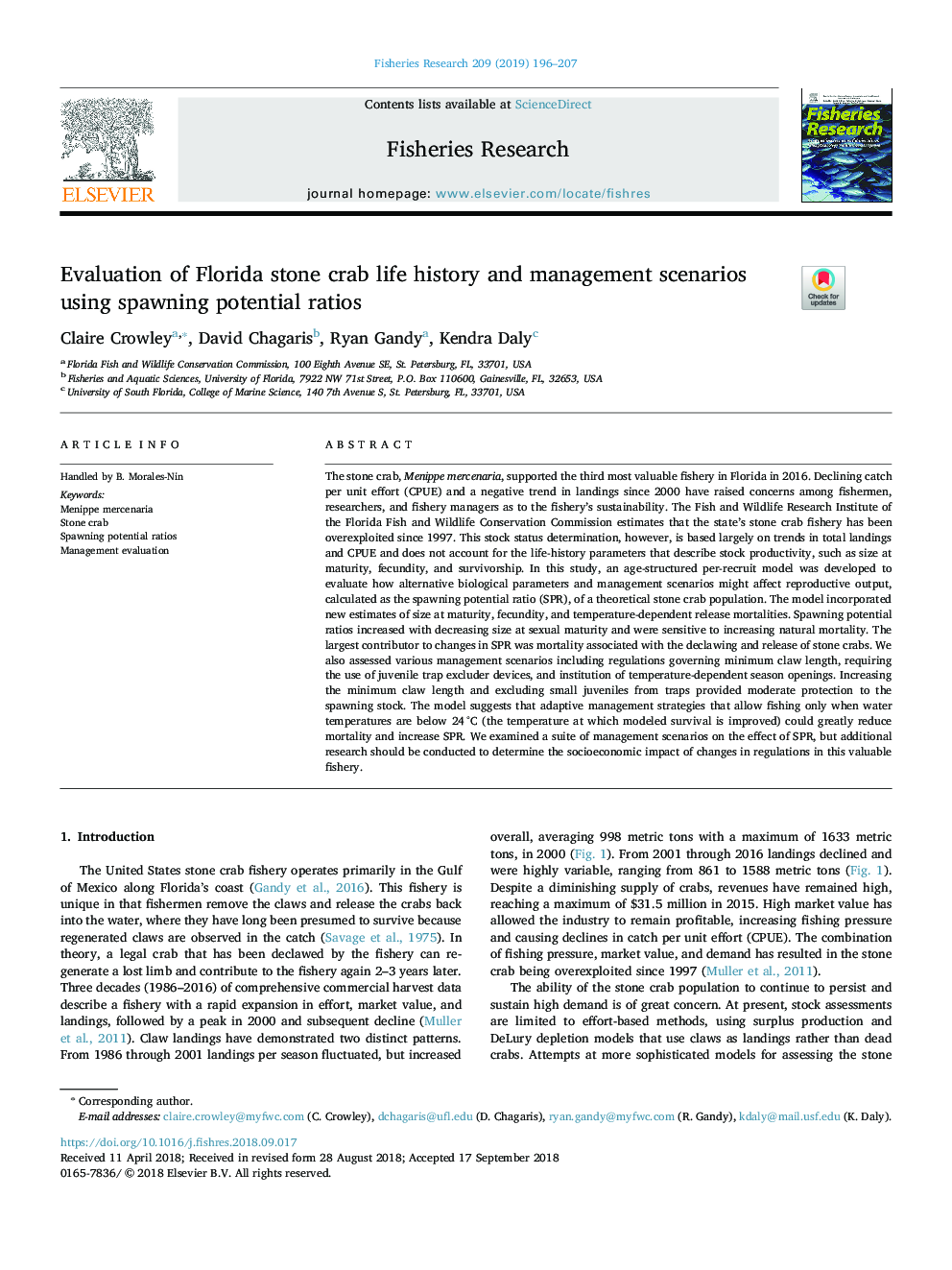| کد مقاله | کد نشریه | سال انتشار | مقاله انگلیسی | نسخه تمام متن |
|---|---|---|---|---|
| 11024921 | 1701060 | 2019 | 12 صفحه PDF | دانلود رایگان |
عنوان انگلیسی مقاله ISI
Evaluation of Florida stone crab life history and management scenarios using spawning potential ratios
ترجمه فارسی عنوان
ارزیابی سابقه زندگی حیوانات فلوریدا سنگ و سناریوهای مدیریت با استفاده از نسبت بالقوه تخمینی
دانلود مقاله + سفارش ترجمه
دانلود مقاله ISI انگلیسی
رایگان برای ایرانیان
موضوعات مرتبط
علوم زیستی و بیوفناوری
علوم کشاورزی و بیولوژیک
علوم آبزیان
چکیده انگلیسی
The stone crab, Menippe mercenaria, supported the third most valuable fishery in Florida in 2016. Declining catch per unit effort (CPUE) and a negative trend in landings since 2000 have raised concerns among fishermen, researchers, and fishery managers as to the fishery's sustainability. The Fish and Wildlife Research Institute of the Florida Fish and Wildlife Conservation Commission estimates that the state's stone crab fishery has been overexploited since 1997. This stock status determination, however, is based largely on trends in total landings and CPUE and does not account for the life-history parameters that describe stock productivity, such as size at maturity, fecundity, and survivorship. In this study, an age-structured per-recruit model was developed to evaluate how alternative biological parameters and management scenarios might affect reproductive output, calculated as the spawning potential ratio (SPR), of a theoretical stone crab population. The model incorporated new estimates of size at maturity, fecundity, and temperature-dependent release mortalities. Spawning potential ratios increased with decreasing size at sexual maturity and were sensitive to increasing natural mortality. The largest contributor to changes in SPR was mortality associated with the declawing and release of stone crabs. We also assessed various management scenarios including regulations governing minimum claw length, requiring the use of juvenile trap excluder devices, and institution of temperature-dependent season openings. Increasing the minimum claw length and excluding small juveniles from traps provided moderate protection to the spawning stock. The model suggests that adaptive management strategies that allow fishing only when water temperatures are below 24â°C (the temperature at which modeled survival is improved) could greatly reduce mortality and increase SPR. We examined a suite of management scenarios on the effect of SPR, but additional research should be conducted to determine the socioeconomic impact of changes in regulations in this valuable fishery.
ناشر
Database: Elsevier - ScienceDirect (ساینس دایرکت)
Journal: Fisheries Research - Volume 209, January 2019, Pages 196-207
Journal: Fisheries Research - Volume 209, January 2019, Pages 196-207
نویسندگان
Claire Crowley, David Chagaris, Ryan Gandy, Kendra Daly,
